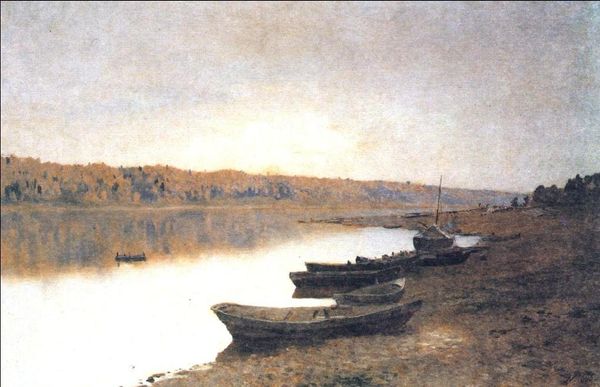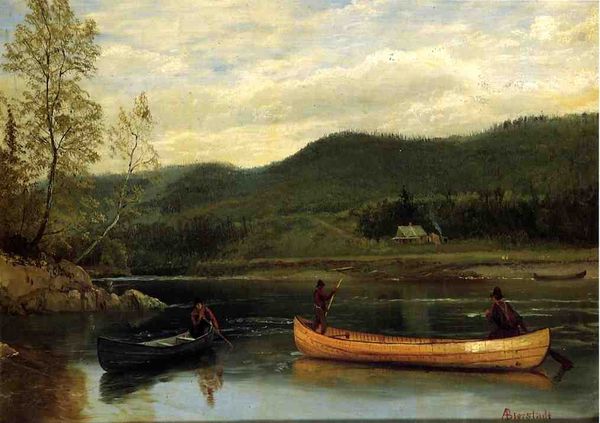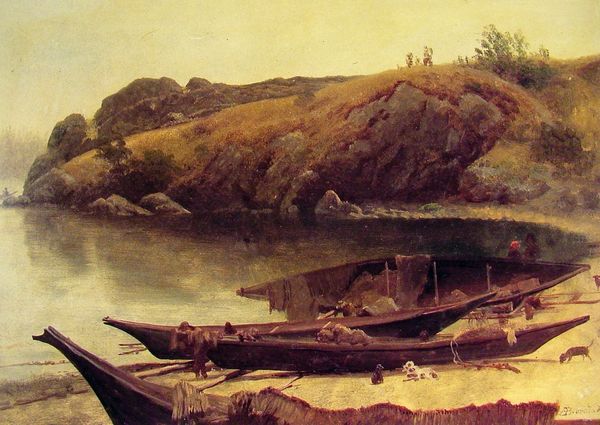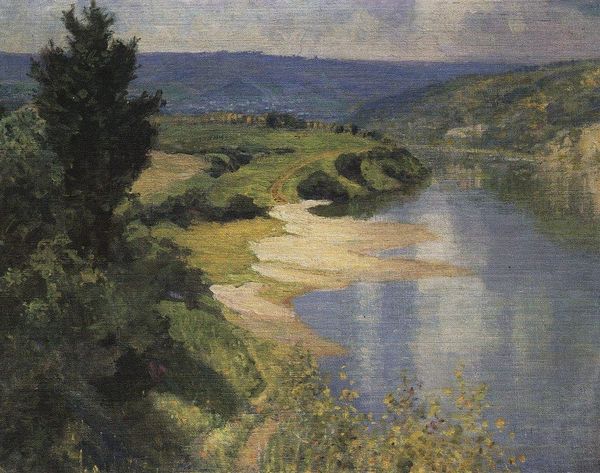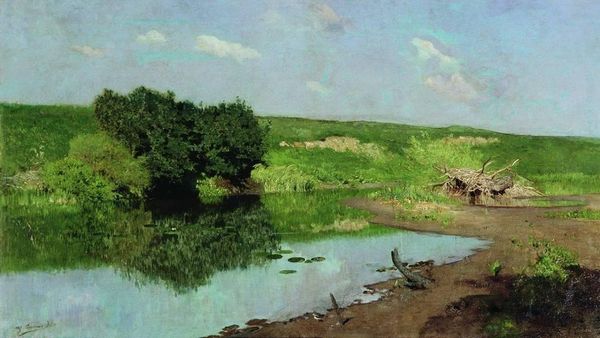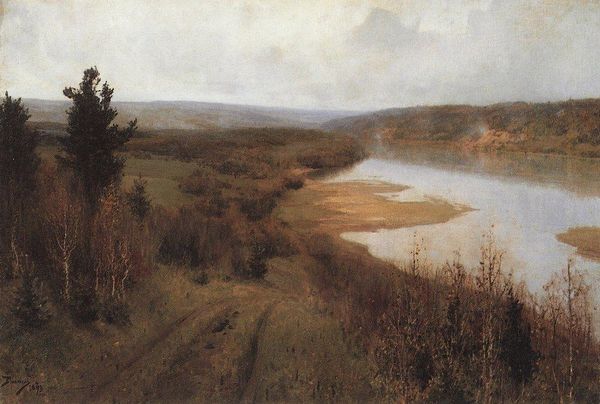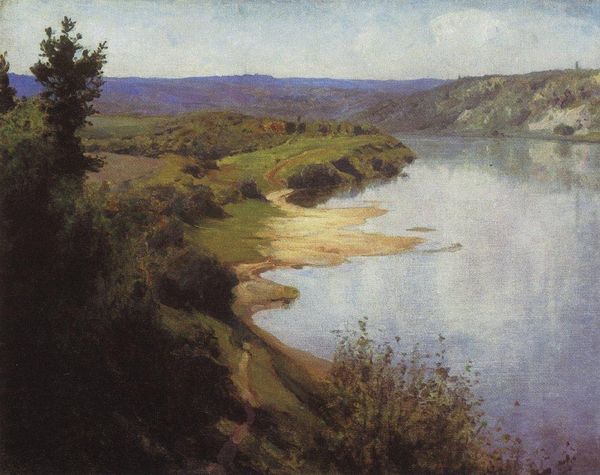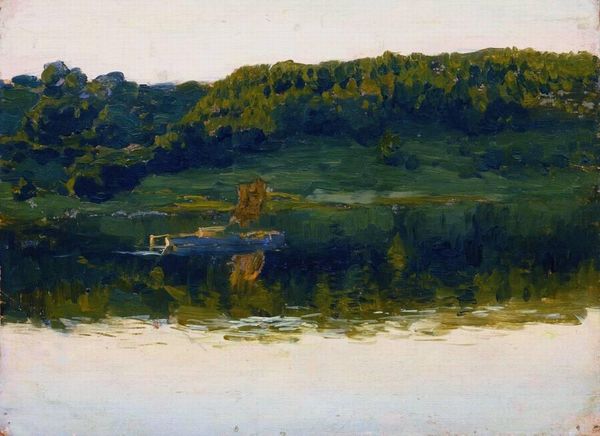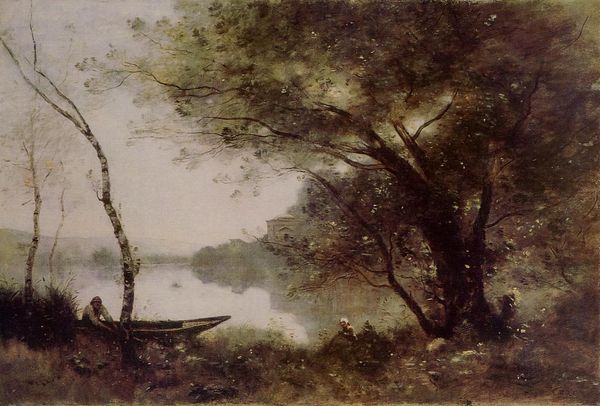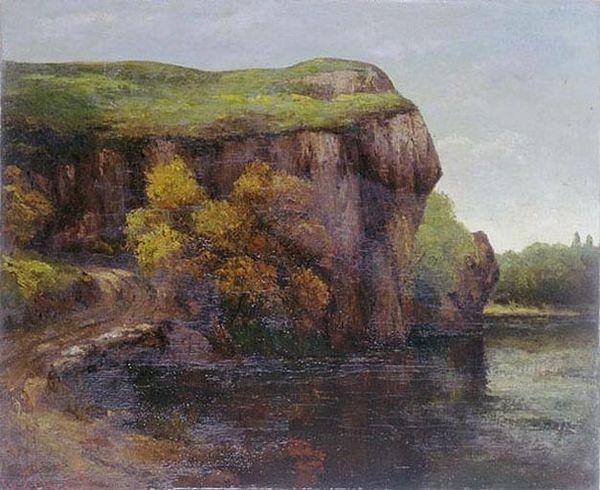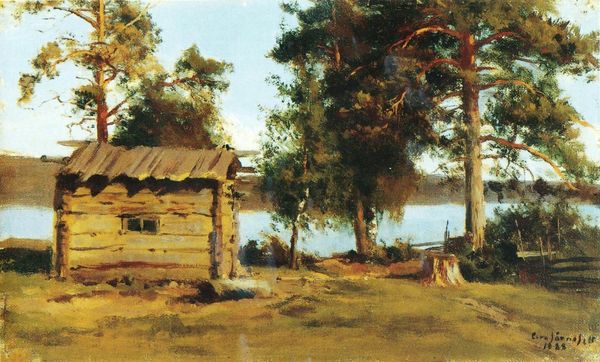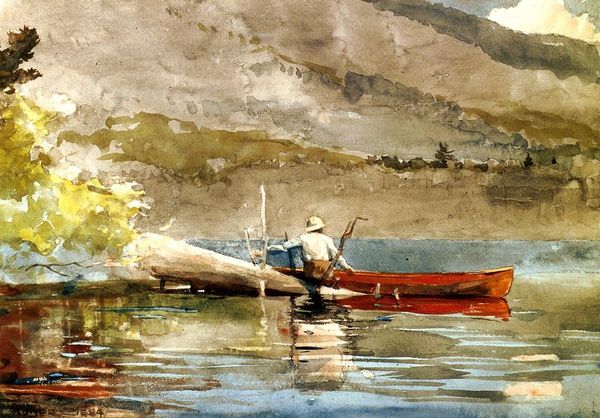
oil-paint
#
boat
#
ship
#
impressionism
#
oil-paint
#
landscape
#
impressionist landscape
#
oil painting
#
seascape
#
realism
Copyright: Public domain
Editor: This oil painting is "St. Triphon's Brook in Pechenega," by Konstantin Korovin. It wasn't dated, but I see it's filed as impressionism. The overall mood feels very calm and serene. I’m really drawn to the boats pulled up on the shore and the way the light catches on the water. What stands out to you when you look at this piece? Curator: Immediately, I see how the artist uses light and shadow to imbue the scene with a quiet sense of longing, typical of seascapes of the time. Notice how the boats, although present, are empty. They serve almost as vessels of the soul, resting between journeys, reflecting a universal human experience of pause and introspection. Do you feel that the stillness amplifies the emotional resonance? Editor: Definitely. It makes me wonder where everyone is, and what their stories are. Are those boats commonly depicted in Russian art, do you know? Curator: Boats, yes, appear frequently, holding symbolic weight related to journeys, trade, and connection to the wider world, however, it's St. Triphon who offers a more telling link. He was a local Saint, and these waterways were vital. Consider how the very name of the brook invokes protection, blessings of safe passage, suggesting not merely a landscape but a sacred space for the community. Even now, a quiet place by water often calls on similar themes of faith, nature, and resilience. Editor: That's a great point about St. Triphon, it totally enriches the image, making me think about its cultural meaning, beyond just boats and water. Curator: Precisely! By layering realistic and symbolic elements, the artist creates a landscape imbued with deep cultural memory and continuous spiritual echoes. Editor: Thanks! I am going to think of the waterways in art quite differently now.
Comments
No comments
Be the first to comment and join the conversation on the ultimate creative platform.
